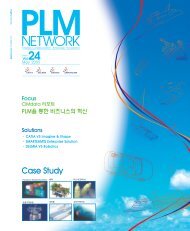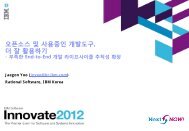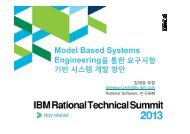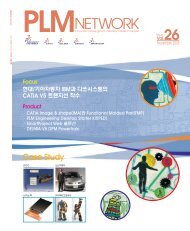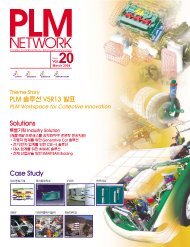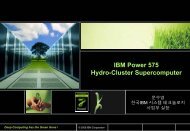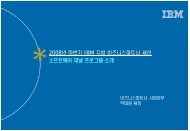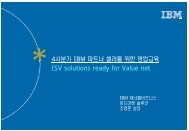You also want an ePaper? Increase the reach of your titles
YUMPU automatically turns print PDFs into web optimized ePapers that Google loves.
Original DocumentForeign Direct Investment to Korea MarketThere are many major Fortune 500 companies located in Korea and, as Korea’s FDIinflows continue to grow many firms will require assistance setting up branch operations,finding Korean partners, and looking for ways to grow their business in Korea. In this guestcolumn, I will introduce Richard Marusyk who works as a consultant for IRC, a businessdevelopment consultancy which focuses on providing support services for Westerncompanies interested in the Korean market.Q1How do you suggest companies new to the Korean market get started here?Richard MarusykIRC LimitedIf you are new to the Korean market we suggest you start by conducting some 컨설턴트richardmarusyk@ircltd.combasic market research. First of all, is market entry justifiable? The size of your market in www.ircltd.comKorea and understanding strengths/weaknesses of your competitors is central when makingthis decision. Secondly, it’s important to keep in mind that Korea is unique and that Korean customers may have verydifferent requirements than customers in other markets. Therefore identifying what these differences are early in theprocess and making refinements as required increases your likelihood of success. Third, are there regulation orimportation issues? While most sectors are fully liberalized and regulatory issues are not as much a concern as in thepast, it is still prudent to look into this prior to moving forward.Once you do your homework in these major areas you can more confidently make a clear ‘go/no go’ decision. IRC helpsWestern companies answer these questions. Our approach is to utilize a combination of primary and secondaryresearch into our clients’ sector. While the secondary research provides useful background statistics, it’s the face-tofaceinterviews with clients’potential customers which yield the richest insights. Taken together this approach providesvaluable input for a viable market entry strategy.Q2How do you help foreign companies who already have operations in the Korea market but find themselvesstruggling?We carry out a focused internal and external analysis of your firm. First it’s important to find the internal root cause ofthe problem. We do this by examining what people and/or systems are weak and need support. Externally it’s veryuseful to talk to a cross-section of your customers, as they are the best judge of how well your firm’s value added is infact meeting their needs. After that it’s a question of prioritizing issues, developing solutions, and rolling out a focusedprogram to take corrective action and get back on track. Sometimes foreign managers walk into their postings in Koreaand find the business in a mess. In one case we found a client invested in a new production facility when their wasalready overcapacity in their industry. Indeed, it can be quite a challenge for the new expat manager to try to turn thingsaround. The problem was that the company’s leadership was dominated by production. We found a number of concretesteps they could take to help get results. These included an aggressive marketing drive, differentiating their productfrom competitors, and transferring authority from production to sales and marketing.Q3What do you think the key factors are to win business in Korea?Key is putting your customers first. The Korean market is very competitive and it is rare to find opportunitieswhere there are not already multiple players fighting for market share. Often we find though that customers areneglected. While a CRM system may be a solution, if your staff does not apply such a tool properly it will generate littlebenefit. For example, sales staff here tend not to prioritize customers but treat big and little customer equally. Whatresults is that their top clients end up being underserved. As a rule of thumb, 80% of your business is generated by 20%of your clients? the so-called 80/20 rule. Therefore, how you treat your top customers has a big impact on your bottomline. A method to help focus the activities of sales staff is to simply segregate customers into high, average and lowperformers. A sales force that clearly understands the customer ranking ensures high performing customers are betterserved. This can result in immediate positive impact on the bottom line.PLM Network|vol.25|29



![Microsoft PowerPoint - [MNC]IBM Security_\300\316\274\342\272](https://img.yumpu.com/51209374/1/190x134/microsoft-powerpoint-mncibm-security-300316274342272.jpg?quality=85)
![ëë
[;ëë§ì ë
í¹í] ì¤íì¼, ë°ì´í°ì¼í° ì§ê¸° - IBM](https://img.yumpu.com/51159373/1/190x131/eeeei-eii-iii-1-4-eiii-1-4-i-ie-ibm.jpg?quality=85)
